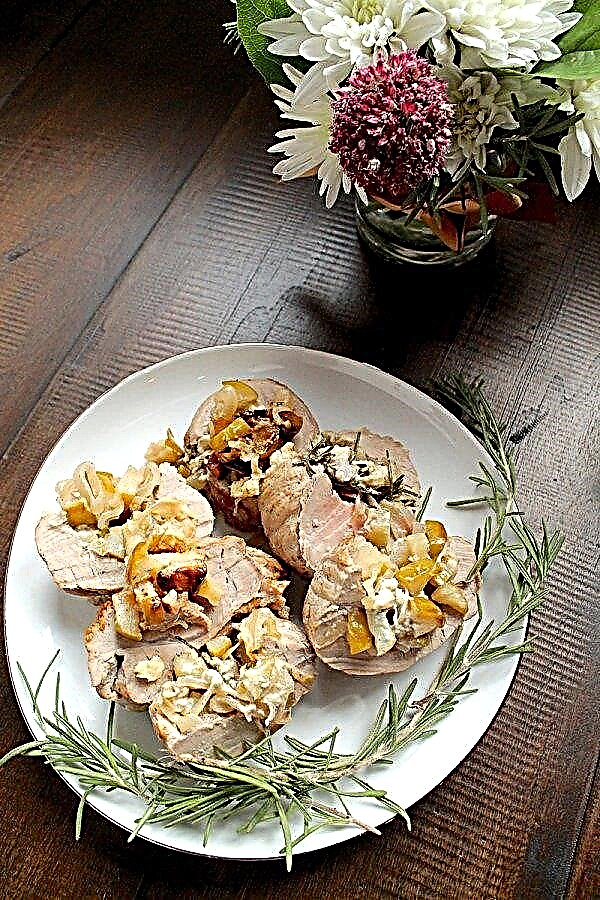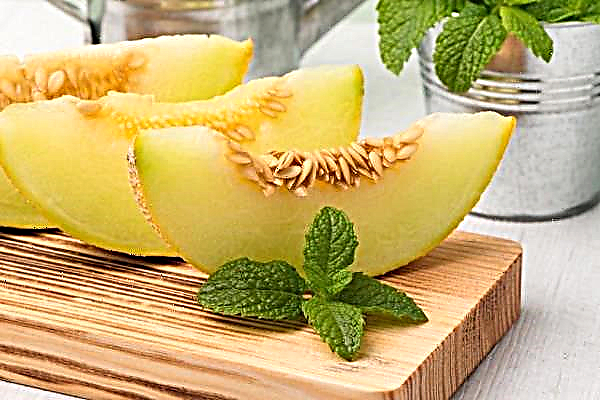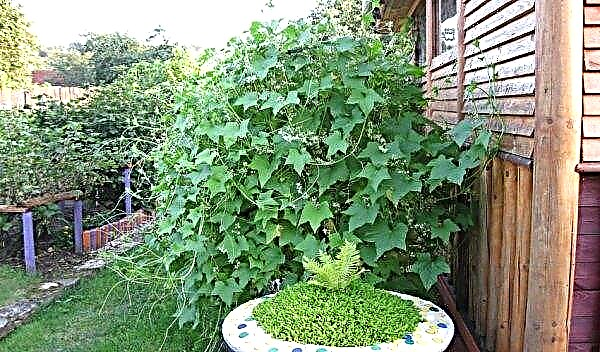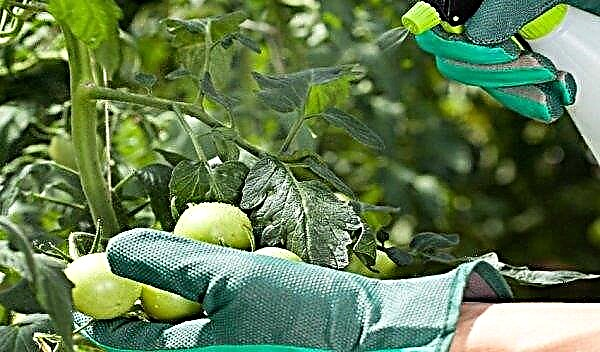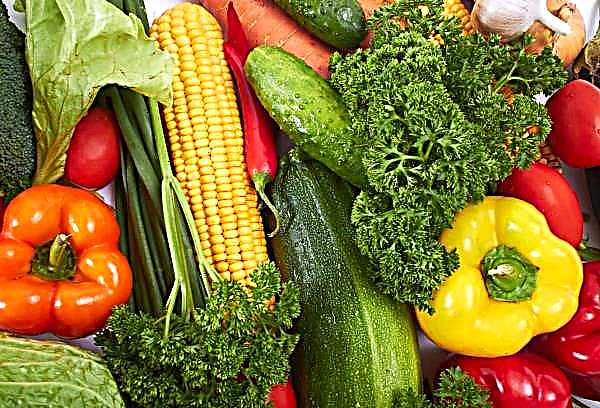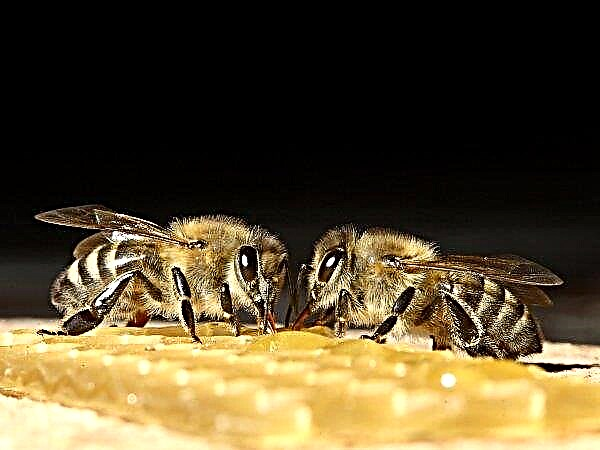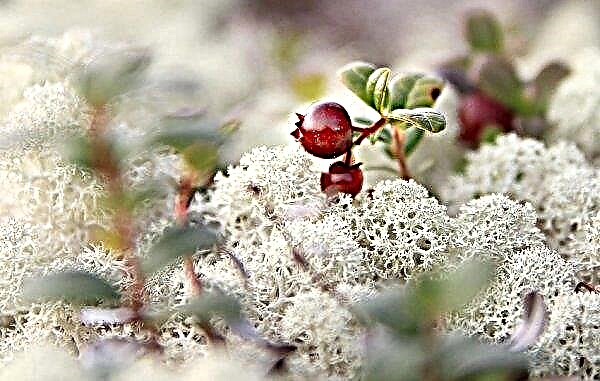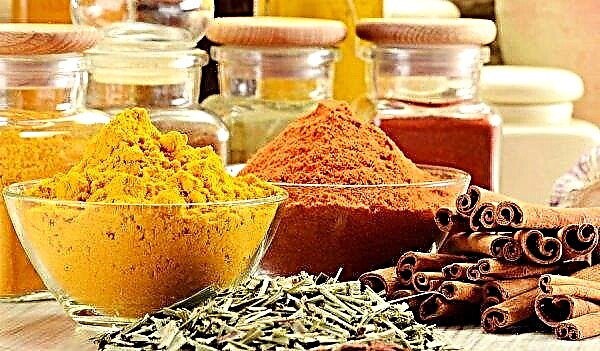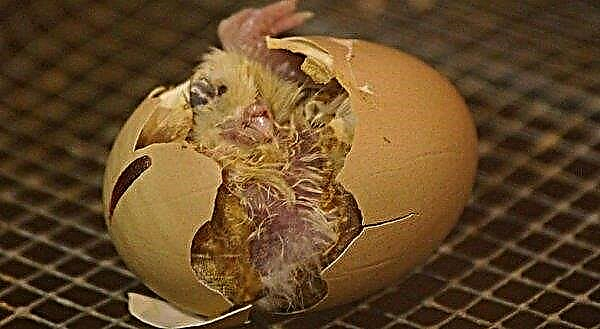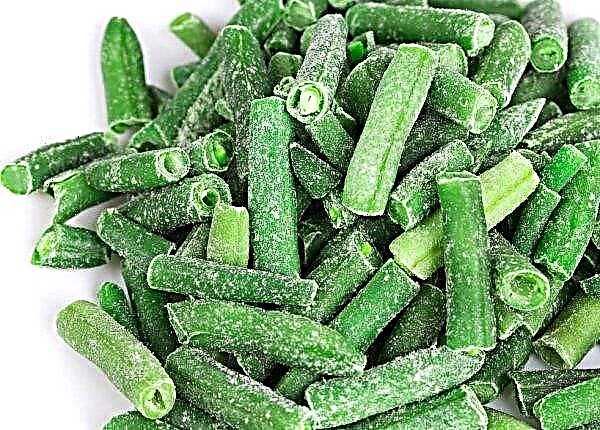Since ancient times, Champignon has been one of the most popular mushrooms due to its excellent taste and prevalence in different parts of the world. Meadow champignons (also commonly known as “peppers”) grow well not only on open lawns or near farms, but also at home, just in the garden or in the country. From them you can cook a lot of exquisite restaurant and simple homemade dishes, use for various preparations and even in traditional medicine.
Description
In the process of growth of meadow champignon, the shape of its cap changes. In the youngest, it is spherical, then hemispherical, with curved edges, then - convex-prostrate and, finally, flat. Gymenophore - lamellar. The plates at the bottom of the cap have a flat edge, they are thin and often located.

Their color varies from snow-white to black with a purple tint, depending on the degree of maturity of the fetal body. Spore powder has a dark, almost black color. The length of the leg is from 3 to 10 cm, and its diameter does not exceed 1-2 cm. The skirt (ring) is white, thin and wide, but it disappears in an adult mushroom.
Appearance
The cap is white, smooth, uniform and silky to the touch. Very often in adult specimens it is covered with gray-brown scales. The leg is cylindrical in shape, it expands predominantly at the base. The leg is also white, but it happens that the bottom of the fungus acquires a brownish tint (this is a variant of the norm), to the touch is smooth, without roughness.
Meadow champignon has a dense, fleshy, but completely not juicy, snow-white pulp with an expressive "mushroom" smell. At the site of a cut or fault under the influence of oxygen, it turns pink.Video: Meadow Champignon
Growth Changes
In the process of growth, all parts of the fungus undergo metamorphoses. Many of them are visible to the naked eye:
- during the period of intensive growth, the leg of the peecherka becomes denser;
- the structure of the pulp becomes denser;
- the skin on the hat acquires a yellow or pink hue;
- the hat becomes harder and less silky to the touch;
- gimenofor becomes red-brown.

Habitat
The phase of active growth of meadow small peppers begins in late spring and continues until the end of September. In the warm autumn, “quiet hunting” can be practiced until the first frost. The highest productivity is observed in the summer. This mushroom is not very whimsical to the conditions and can be found in many places with rich humus soil:
- on pastures for cows and horses;
- near farms;
- in summer cottages and gardens;
- in the meadows;
- in city parks and squares;
- in the ditches in the fields.

Edibility
Absolute safety of a peechernik is a myth. Even people who consider themselves to be experienced and competent mushroom pickers should be extremely careful, since even those mushrooms that are considered edible are only conditionally harmless. Overripe, wormy, damaged or excessively soft fruiting bodies accumulate carcinogens and heavy metals, they can cause irreparable harm to health.
Important! You can’t pick and eat mushrooms growing in abandoned landfills, in industrial places, near roads and sewage treatment plants. Everything that grows in such an area actively absorbs toxic compounds in high concentrations and can cause serious diseases.
An indicator of the edibility of the peppers can be considered a change in the color of the pulp at the break. In safe mushrooms, it should turn pink. There are also species of champignons in which the cut site turns red (double-ring, forest, large-spore) or yellow (field and coppice). Fungi with a yellowing fracture are considered edible, but experts recommend not eating them often or a lot - they contain cadmium and other heavy metals in micro doses, but, accumulated in the body, they can provoke various ailments.
False and inedible doubles
Despite the abundance of print media and detailed descriptions, and photographs of poisonous and edible mushrooms on the Internet, more than a dozen cases of poisoning occur annually. Not all of them end in a successful recovery. This is because some species are very similar to each other, and it is vital to accurately recognize them.
There are types of mushrooms (for example, yellow-skinned or platyalophagous), which are commonly called "false" champignons. Their use is not fatal, but quite dangerous. Outwardly, they are similar to ordinary pecheliki, but have a number of differences:
- when pressed, the flesh becomes yellow;
- when an incision of the leg, it becomes bright yellow, and after prolonged contact with air - orange;
- have a peculiar “pharmacy” smell (anisic or almond aromas are characteristic for edible fruiting bodies);
- if poisonous mushrooms are thrown in boiling water, they turn yellow, staining water, and the unpleasant odor intensifies. In a matter of seconds, the yellowness and unpleasant odor disappear, but toxic substances do not disappear.
Important! The aforementioned “pharmacy” aroma of poisonous mushrooms is associated with iodine, phenolic or the smell of carbolic acid.
It happens that inexperienced mushroom pickers take such deadly poisonous varieties of mushrooms as pale grebe and pale fly agaric for young meadow mushrooms. Outwardly, they are very similar, and their distribution range coincides. It is very important to be as careful as possible and to know how not to become a victim of poisoning. Unlike peppers, the color of the plates of toadstools and fly agarics does not change as they grow - they are always snow-white, like the flesh during a break (cut) and pressure.
A distinctive feature of fly agaric is an unpleasant smell, so it is a little easier to recognize them in time. Pale grebe in this regard is more insidious: poisonousness can not be determined neither by color, nor by taste, nor by smell. In addition, symptoms of poisoning appear when it is already impossible to save the victim. One such instance will be enough to poison several people.
Video: How not to confuse champignons with a pale toadstool
The use of meadow champignon
Due to the excellent taste, accessibility and high content of nutrients, peppers have been used not only in cooking, but also in traditional medicine. The calorie content of raw meadow champignon is 27 kcal / 100 grams. It contains a number of important vitamins and minerals:
- B vitamins;
- vitamins of group E;
- vitamins of the PP group;
- phosphorus;
- calcium;
- zinc;
- potassium;
- iron;
- manganese;
- copper;
- more than 20 amino acids.

Despite all the benefits of peppers, doctors recommend that children under 12 years of age, women during pregnancy and lactation, as well as people suffering from acute or chronic gastrointestinal diseases refrain from using them. This is due to the high content of chitin, the digestion of which is difficult for the digestive system. In addition, experts recommend choosing mushrooms in stores rather than picking them in places with a dubious environmental background.
Did you know? The level of B vitamins in meadow mushrooms is higher than in young vegetables, and phosphorus — more than seafood.
In cooking
The topic of using meadow champignon in cooking can be revealed endlessly. This mushroom is great for preparing various dishes, pickles, drying, and even for eating raw. Regardless of the cooking method chosen, peppers should be washed thoroughly. Soaking them in water is not recommended - they will lose their aroma and dense texture. Heat treatment must be started immediately after cutting, since the product quickly darkens. at The most common ways to use mushrooms in the kitchen are:
at The most common ways to use mushrooms in the kitchen are:
- Cooking. It is recommended to boil independently picked meadow champignons before frying or stewing for 10 minutes in water with the addition of salt (to taste), citric acid (at the tip of a knife), allspice and bay leaf (several each).
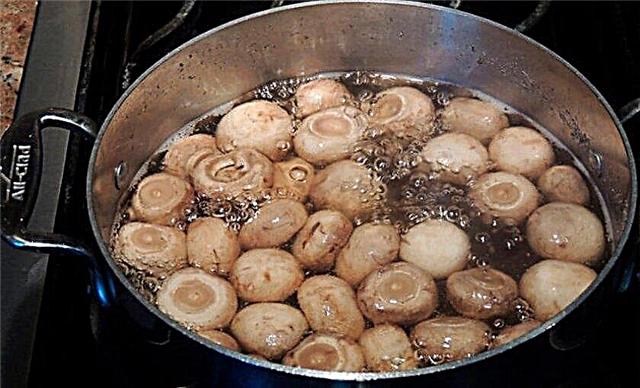
- Pickling. Pickled peppers can be rolled up in jars for the winter or eat a couple of hours after cooking. The process is simple and not troublesome, but the result is beyond praise. When preserving pickled mushrooms, it is necessary to sterilize the jars. This contributes to a long shelf life of the workpiece and prevents the appearance of deadly botulism.
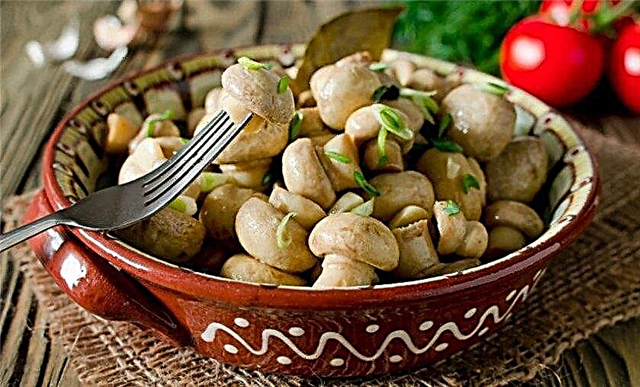
- Freezing Mistresses put champignons in a different form in the freezer: whole, sliced, cooked, fried, and even immediately with broth. You do not need to defrost before cooking.
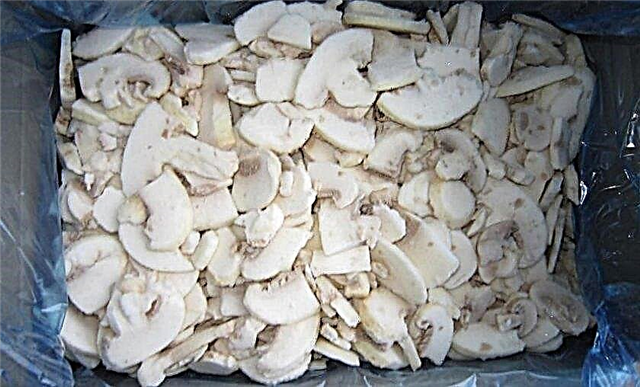
- Quenching. Stewed cauliflowers with onions and sour cream are prepared very quickly and simply, but the result will not leave anyone indifferent. It is necessary to cut pre-washed prepared mushrooms with slices and fry in a pan without oil until the moisture evaporates. Then you need to add vegetable oil and onions and fry until golden brown. At the end, add sour cream, salt and simmer a couple more minutes.

- Besides, fried, raw and pickled mushrooms often used to prepare different salads, soups, cream soups, fries and other gourmet, festive and everyday dishes.

In folk medicine
- Few people know that meadow champignon can be safely used not only for cooking culinary delights, but also for the treatment of many diseases:
- the minimum amount of fats and carbohydrates and the ability of the peppers to lower blood glucose make it a real find for diabetics;
- This low-calorie, high-protein product is recommended for anyone who wants to lose weight;
- experts advise using champignons for tracheitis, bronchitis, asthma and other problems with the respiratory system, as they have a mild expectorant and bronchodilator effect;
- perfect for adherents of a salt-free diet due to the minimum sodium content;
- the components of lysine and arginine contribute to the improvement of brain activity and memory;
- help cope with ulcers, symptoms of psoriasis and eczema, purulent wounds;
- have proven effectiveness in the treatment of mumps, typhoid, tuberculosis;
- dried peppers will help resist peptic ulcer disease and hepatitis;
- oil extract copes with purulent skin lesions, psoriasis.

Oil extract is a unique tool for the treatment of various skin diseases (psoriasis, purulent wounds, etc.). The preparation of such a medicine at home does not require much time, effort or special skills. Step-by-step cooking instructions:
- Take fresh champignons (do not wash!), Cut them into small pieces of arbitrary shape (cubes, cubes), fill them with a glass jar to the top and pour olive oil so that it completely covers the mushrooms.
- Close the lid and send the future oil extract for 4 hours to the refrigerator.
- Next, the jar needs to be put in a water bath for 1 hour, after which its contents are filtered.
- If desired, the peppers can be seasoned with spices and eat, and the resulting oil extract (stored in the refrigerator) used to treat skin diseases, lubricating the affected area 2 times a day until recovery.

As you can see, the range of application of meadow champignon is very wide. The main thing is to responsibly approach the place and quality of the “silent hunt”. People who like mushrooms, but are not sure of their knowledge about them, are advised to buy mushrooms in stores, and not eat their own picks. Mushrooms grown under industrial conditions will delight you not only with impeccable taste and aroma, but will also benefit your health.






